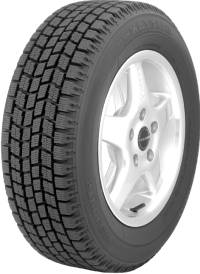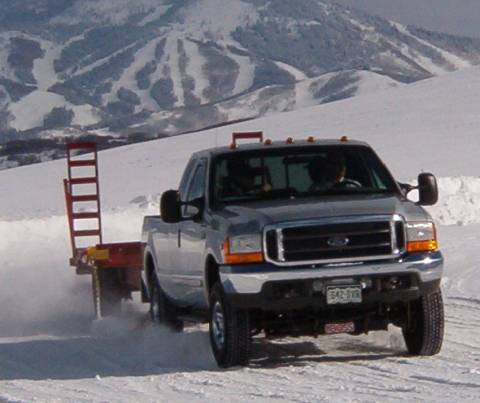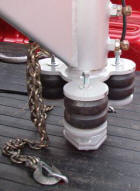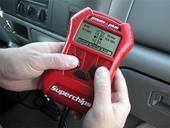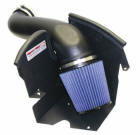It's an important
subject, so we'll keep adding more articles. |
|||||||||||||
|
 STANDARDS
TESTING LABS PRODUCES 10' DIAMETER TIRE AND WHEEL RADIAL FATIGUE TESTING
MACHINE STANDARDS
TESTING LABS PRODUCES 10' DIAMETER TIRE AND WHEEL RADIAL FATIGUE TESTING
MACHINEMASSILLON, OH (September 10, 2004) - Standards Testing Laboratories (STL), the world's largest independent testing facility for tires, wheels and related automotive components, recently completed production of a new 10' diameter tire and wheel radial fatigue testing machine. More... |
|
|
|
I went to winter driving school in Steamboat Springs. more... |
Bridgestone invited me to test drive Toyota SUV's with Blizzak snow tires on the Avalanche ice hockey rink in Denver. Yes I have pictures below. One SUV had all-terrain tires and the other Blzzak tires. In straight-aways, acceleration and stopping was better with Bridgestone Blizzak tires. And in cornering and slalom cones, the Bizzak tire out performed all-terrain tires on pure ice. Look at the wavy lines in the tire below. These sipings are part of the reason for the better traction. The rest of the story below.
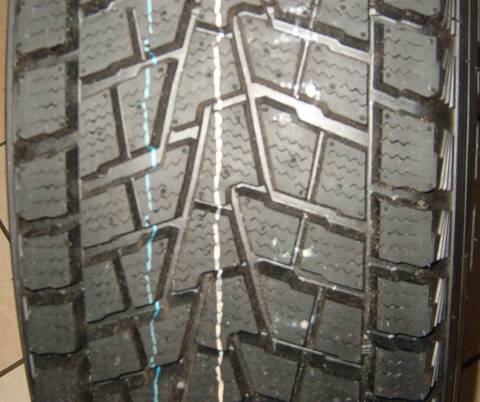
BLIZZAKÒ FACT SHEET
The Bridgestone Blizzak ice and snow tire is truly unique, thanks to its patented MulticellÒ tread compound.
The Multicell compound:
· The MulticellÒ compound contains thousands of microscopic cells, or pores, which resemble the consistency of Swiss cheese when examined through a microscope.
· As the Blizzak wears, the pores are exposed and create thousands of biting edges that grip the road.
· In addition to the biting action, the pores remove the thin layer of surface water, which often develops on top of icy roads, allowing the biting edges to adhere to the surface with less interference. The result is enhanced resistance to hydroplaning and greater driving and braking force on ice- and snow-covered surface.
· The pores are uniformly distributed throughout the MulticellÒ compound so as the tire wears, new pores are constantly being exposed along the tire tread surface.
Other Blizzak facts:
· The Blizzak is a studless snow tire and was developed for the Japanese market due to environmental concerns over studded snow tires.
· In a test conducted on an ice rink, a car fitted with Blizzak tires stopped an average 35 feet shorter than a similar vehicle fitted with premium all-season tires.
· The Blizzak is a dual compound (cap and base) tire. The cap features the MulticellÒ compound, and the base is comprised of a winter compound, allowing use as a basic winter tire. When the Blizzak is 50 percent worn, a tread depth indicator on the tire tread lets the motorist know that only ten percent of the remaining tread is the MulticellÒ compound.
· As with the purpose-built winter tire, the Blizzak should be used only during the winter season to maximize its life span. The motorist should switch back to all-season tires during the other seasons.
Below, the Colorado Avalanche Ice Hockey Rink at Pepsi Center in Denver.
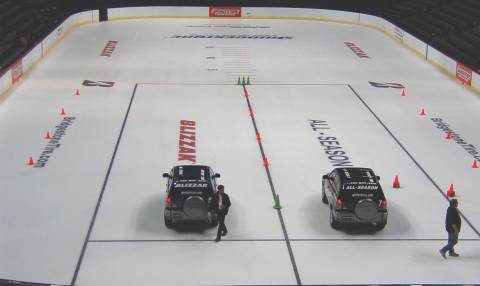
WINTER DRIVING TIPS FROM THE EXPERTS
Bridgestone Winter Driving School Director and Pro Race Driver Mark Cox lives and drives through the winter months in Steamboat Spring, Colo. Cox has helped Bridgestone/Firestone put together the best strategic advice to take your vehicle on the snow-laden roads in the real world by offering winter driving tips to help you and your family reach your destination safely.
Before you drive:
Check windshield wiper blades to make sure they work properly. In some areas, snow blades are an effective alternative to conventional wiper blades.
Have your mechanic test the anti-freeze/coolant to provide the correct level of protection required in your driving area.
Make sure your tires are properly inflated. Letting air out to drive in snow can reduce the gripping action of tires because the tread will not meet the road surface as it was designed to do. Over-inflation has the same effect.
Use dedicated snow and ice tires if you live in areas where snow and ice are certainties of winter driving. Snow and ice tires have a softer tread compound and a unique tread design to provide enhanced traction and road-gripping capabilities. Install snow tires all the way around the vehicle, not just on the drive axle.
Keep your gas tank at least half-full. The extra volume can help reduce moisture problems within your fuel system. It also adds a margin of safety should you become stopped or stranded during your trip.
Try to remove ice and snow from your shoes before getting in your vehicle. As they melt, they create moisture build-up, causing windows to fog on the inside. You can reduce this fogging by turning the air re-circulation switch to the OFF position. This brings in drier, fresh air. You can also run your air conditioner for a few minutes, which serves as a dehumidifier.
Scrape the ice and snow from every window and the exterior rear view mirrors, not just a small patch on the windshield. Don’t forget headlights and brake lights.
You and your passengers should always use safety belts, both lap and shoulder straps. Pull them snuggly to ensure they work properly.
Adjust headrests so that the back of the head rests squarely in the center of the headrest. Rear-end collisions are common in winter driving and a properly adjusted headrest can prevent, or reduce, neck injuries.
Turn off your radio. Although your radio can provide helpful traffic information, it can also be a distraction for some drivers. Remember, driving is more a mental skill than a physical skill.
Don’t use a cellular phone. Even if you have a hands-free model, you need to concentrate on driving, not on a telephone conversation when driving on ice or snow.
Below on the ice rink, a good test usually takes out a few cones.
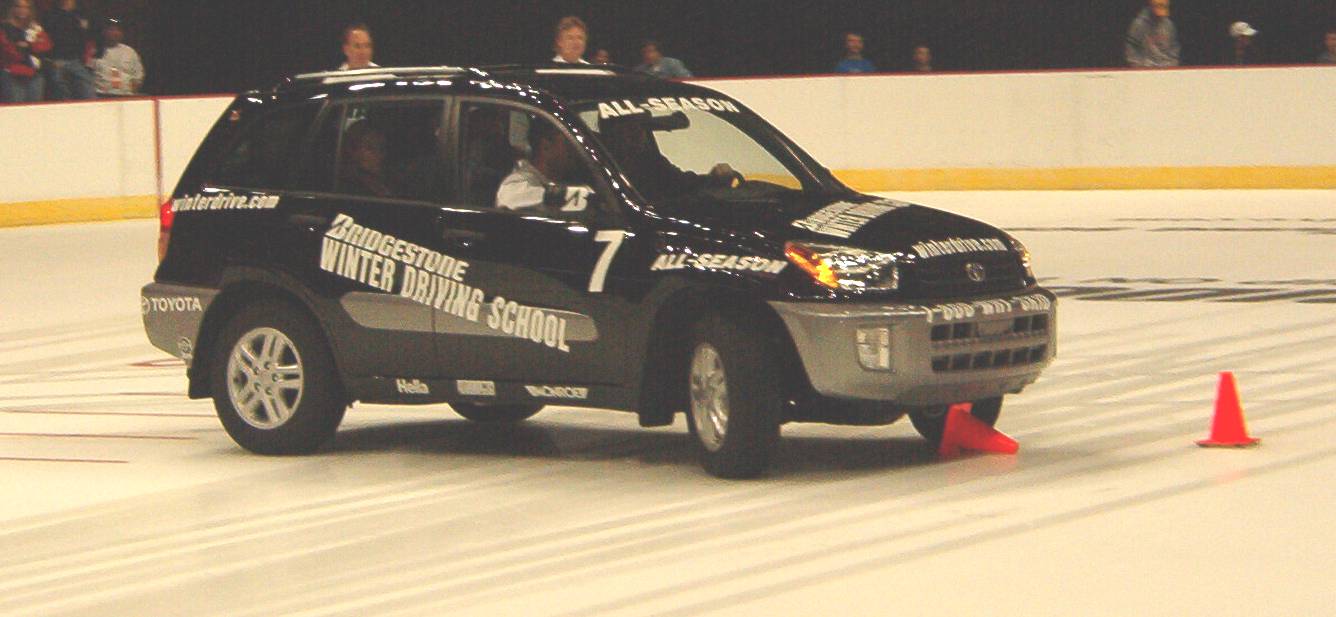
Keep your vehicle stocked with simple emergency equipment in case you do get stalled or have an accident. Consider keeping these items in your vehicle.
1. A blanket or extra clothes 7. Long jumper cables
2. A candle with matches 8. A small shovel
3. Snacks 9. A flashlight
4. Beverages (never alcohol) 10. A windshield scraping device
5. Flares 11. A tow rope
6. C.B. radio, cellular phone or hand radio 12. A bag of sand or cat litter for traction
During winter months, keep abreast of weather reports in your area. If snow or ice is predicted, make plans to leave early or arrive later. An alarm clock set to an earlier time can be a good friend in helping you avoid difficulties.
If you can move a night trip to daylight hours, do so. Not only is visibility better, but if your vehicle is stalled, you are more likely to receive prompt assistance during the daytime.
Before you shift into gear, plan the best route to your destination. Avoid hills, congested areas and bridges if possible.
When you drive:
Adjust your speed to the current conditions. When driving in challenging conditions, decreasing your speed will allow more time to respond when a difficult situation arises. Factors such as the type of vehicle you are driving, the quality of snow tires your car is equipped with, and your abilities as a driver should be considered in the speed adjustment. Remember that posted speed limits identify the maximum speed allowed when weather conditions are ideal. Law enforcement agencies can write citations to motorists driving the posted speed limit if weather conditions warrant a slower speed.
Anticipate difficult situations. Studies have shown that 80% of all accidents could be prevented with only one more second to react. In many situations, this one second can be gained by looking far enough down the road to identify problems before you become a part of them. Be alert to the actions of other drivers. Put extra distance between your vehicle and the one in front of you. If someone is too close behind you, don’t speed up; slow down and let them go around you.
Use grip effectively. When roads are slippery, you should use the entire available grip. Brake only before the curve when the car is traveling straight. Taking your foot off the brake before you steer into the curve allows you to use all of the grip available for steering. Don’t accelerate until you begin to straighten the steering wheel when exiting the turn.
This technique will allow you to be 100% effective at each maneuver. In many situations, better grip or traction can be gained by placing the outside wheels toward the shoulder of the road, out of the ruts which may have formed in the center. The difference in traction can cause the car to be unbalanced during the transition from rut to shoulder – so be alert.
Maintain a comfortable driving environment. A constant flow of cool air will help to keep you alert, and keep the windows clear of frost. Keeping one window slightly open will allow you to hear sirens and other warning sounds more quickly. Avoid large bulky boots, gloves and coats, and never drive in ski boots.
Turn on your lights. Whenever daytime visibility is less than ideal, turning on your lights allows you to see, and to be seen by others. Remember this rule of thumb. Wipers On – Lights On.
When driving at night, leave your headlamps on low beam when driving in snow or fog. This practice minimizes the reflection and glare, improves visibility, and reduces eye fatigue. When oncoming cars approach, focus on the right side of the roadway to help maintain good night vision.
Keep a smooth, progressive and light touch on the brakes for normal braking. Even in a car equipped with ABS (Anti-Lock Braking System). In the event of an emergency in an ABS-equipped car, press the pedal HARD and hold it down. Remember that an ABS-equipped car can also steer around many obstacles while braking. Perhaps a better description of ABS would be: “Allows you to Brake and Steer.”
Keep both hands on the wheel at 9 o’clock and 3 o’clock positions. And steer smoothly in the direction that you want to go. Avoid the “hand over hand technique.” Instead, utilize the shuffle technique and keep the right hand on the right side of the wheel and the left hand on the left side of the wheel. While it may sound overly simple, it can help you avoid skids.
Be careful when using downshifting as a way to slow the vehicle. Even though manual transmissions may provide greater control to assist with braking, gear changes should always be made smoothly in the straightaway before the corner. Abrupt gear changes may upset a vehicle’s balance and cause a skid to occur, especially while cornering.
Don’t overestimate the capability of four-wheel drive vehicles. Many drivers mistakenly believe that four-wheel drive is all-powerful. Every type of vehicle depends on four small contact patches where the tire meets the road for traction. This small contact area is the limiting factor of any vehicle on a slippery surface. Four wheel drive does not improve braking or cornering effectiveness.
Anti-lock brakes can’t perform miracles. Don’t be misled by ABS braking systems. Braking efficiency is limited by the grip available, and the type of tires with which your car is equipped. If you carry too much speed into a corner and then try to brake, even ABS won’t keep you on the road. Never count on technology to replace good judgment.
Wear quality sunglasses. Good quality sunglasses help highlight changes in the terrain and road surface even in low visibility conditions.
The world’s best drivers are trained to anticipate problems early and direct the vehicle appropriately before they become involved in a problem. Reacting too quickly can be dangerous if the driver’s response is inappropriate.
When driving up a steep hill, gain speed and momentum on the flat before starting uphill. When the car begins to slow part way up the hill, ease up on the accelerator, allow the car to slow down and crest the hill slowly. If you try to accelerate too hard and the wheels spin, you may lose momentum and not make it to the top. It’s better to reach your destination at a slower speed than to not make it at all.
If you have trouble, run the engine only briefly – not continuously -- to run the heater. Regularly make sure that the exhaust pipe is clear of snowdrifts or other obstructions. Carbon monoxide can accumulate more easily in a non-moving vehicle.
I did well accelerating on ice and stopping with Blizzak snow tires.

DRIVING EXPERT SAYS VEHICLES PERFORM BETTER IN WINTRY
CONDITIONS WITH PURPOSE-BUILT SNOW TIRES
DENVER, Col. (August 29, 2003) – Winter can bring with it a variety of adverse weather conditions from snow and ice to rain and fog. All of these unpredictable elements can make driving in winter very challenging. Mark Cox, director of the Bridgestone Winter Driving School in Steamboat Springs, Colo., offers some practical advice on selecting the right tires for winter driving.
“One of the most important factors in starting, steering or stopping on ice and snow is your tires,” Cox says. “It makes no difference if you have a front-wheel, four-wheel or rear-wheel drive, your vehicle will perform better in most winter driving conditions if it is equipped with purpose-built snow tires instead of all-season radials.”
Cox explains that all-season radials are designed to perform year-round and cannot have the softer rubber compounds and unique tread of snow tires.
“Tire manufacturers have certainly come a long way in improving winter traction of their all-season tires, but a dedicated snow tire is designed specifically to handle winter driving needs. And with more states outlawing or limiting the use of studded snow tires, studless snow tires are becoming more popular.”
With more than 90 sizes currently available in the United States, the Bridgestone Blizzak™ family of ice and snow tires will fit many of today’s popular vehicles, from sedans, to SUVs, to light trucks.
The Bridgestone Blizzak ice and snow tire features a revolutionary MulticellÒ rubber compound which contains thousands of microscopic cells and pores.
These cells resemble the consistency of Swiss cheese when examined through a microscope. As the Blizzak wears and the pores are exposed, they become “microdents” which create thousands of biting edges that grip the road surface. The pores are uniformly distributed throughout the MulticellÒ compound so as the tire wears, new microdents are constantly being exposed along the tire tread surface. The patented MulticellÒ compound is featured only in the Blizzak tire and is produced at only three plants in the world.
In addition to the biting action, the microdents absorb the film of water which often develops on top of icy roads, thereby allowing the biting edges to adhere to the surface with less interference. The result is greater driving and braking force on ice- and snow-covered surfaces. The Blizzak is a dual compound (cap and base) tire. The cap features the MulticellÒ compound and the base is comprised of a winter compound, allowing use as a basic winter tire. When the Blizzak is 50 to 55 percent worn, a tread depth indicator on the tire tread lets the motorist know that only ten percent of the remaining tread is the MulticellÒ compound.
“More and more state and local governments in the United States are prohibiting the use of studded snow tires to protect against road damage, but consumers still want the grip provided by a studded tire,” Cox said. “The Blizzak offers the perfect solution because it is studless, yet it delivers superb ice and snow traction.”
Nashville-based Bridgestone/Firestone North American Tire, LLC, is a subsidiary of Bridgestone Americas Holding, Inc., whose parent company, Bridgestone Corporation, is the world's largest tire and rubber company. BFNT develops, manufactures, and markets Bridgestone, Firestone, Dayton and associate and private brand tires. The company is focused on wholesale and original equipment markets, supplying passenger, light truck, commercial vehicle, off-road, agricultural and other tires to its customers in North America.
Cornering was amazing on pure ice.

Even stopping before running through the goal and wall worked well.
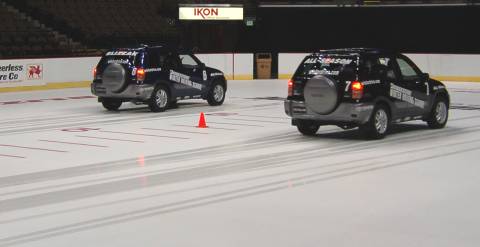
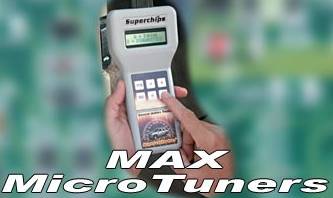 Besides
more power, SuperChips Micro Turners can calibrate for changes in tire
size and gear ratio. Besides
more power, SuperChips Micro Turners can calibrate for changes in tire
size and gear ratio. |
|
|
